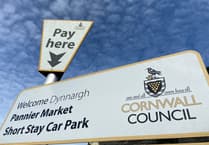EACH week, hundreds of planning applications come before Cornwall Council’s planning department, seeking to win approval for various plans right across the Duchy, with some concerning Holsworthy handled by Torridge District Council.
These plans can comprise of a number of different reasonings – ranging from permission to replace windows or listed building consent ranging up to large house building developments or changing of use of a building, for instance, from an office to a café, or flats.
Within this large and often complex system, there are a number of formats from which planning advice and approval can be sought.
These range from full applications where all the details which comprise a proposed development or work to a building are submitted, to outline applications, where further details are yet to be confirmed, for example, an outline application with reserved matters for appearance may not confirm the final proposed development but rather seek permission in principle.
An example of this is one for an outline permission for 20 dwellings on land with reserved matters for appearance and scale; the reserved matters would require further permission later for their inclusion.
Other types of applications include pre-application advice requests, where would-be developers submit often outline proposals to a local authority to ascertain whether it is likely to gain support or not prior to submitting a planning application.
The vast majority of applications are decided by planning officers employed by a local authority under ‘delegated powers’, meaning they do so on behalf of their employer, however, some applications are ‘called in’ by local councillors to be discussed at an area’s strategic planning committee meeting, meaning the final decision rests with a committee of councillors.
Permission for up to four houses refused
PERMISSION in principle for the construction of up to four housing on land near Bude has been refused by Cornwall Council’s planners.
The application, by Mr Jonathan Hodgson, concerned a permission in Principle for the proposed construction of between one and four dwellings on land between Drumeagles and Chy Lowen, Edgar Road, Jacobstow, Bude.
A permission in principle consent route is an alternative way of obtaining planning permission for housing-led development which separates the consideration of matters of principle for proposed development from the technical detail of the development. The permission in principle consent route has two stages: the first stage (or permission in principle stage) establishes whether a site is suitable in-principle and the second (‘technical details consent’) stage is when the detailed development proposals are assessed.
Jacobstow Parish Council said it objected to the application, stating: “Councillors object to this proposal. Councillors cannot support this Application as there are poor access and poor visibility on this very narrow road. It is a single track road, unlit and will be a danger to the owner(s) of the property(s) and to passing traffic. Also, there are three buses twice a day to the local school plus a service bus and many cars plus cars twice a day to and from the school. Also, we don't class this as infill.”
There were also a number of objections from neighbours.
In an accompanying officers report, it was noted: “The proposal would lead to the provision of open market dwellings, which would undoubtedly contribute to the Council's 5-year supply of housing land.
“This being said, the provision of 4 dwelling (maximum) is only modest. The tilted balance is engaged. In this situation, the NPPF indicates that permission should be granted unless the impacts of doing so would significantly and demonstrably outweigh the benefits, when assessed against the policies of the NPPF when taken as a whole.
“The proposal is unacceptable in principle, being located outside of any settlement and not on any allocated site, nor within one of the main towns outlined in policy 3 of the Cornwall Local Plan. It would result in harm to the character of the area, including the Area of Great Landscape Value in a way which significantly and demonstrably outweighs the benefits of the scheme. It is therefore considered that the impacts outweigh the benefits when assessed against the NPPF as a whole. The scheme is not acceptable.”
Refusing the application, Cornwall Council’s planning department told the applicant: “The proposed dwellings, by reason of the location of the site outside of any land considered to form a settlement, would not represent infill or rounding-off, or make use of previously developed land and would significantly visually extend built form into the open countryside, eroding the character and appearance of the rural setting and the Area of Great Landscape Value in which the site is located, having an urbanising and domesticating impact. This significantly and demonstrably outweighs the benefits of the scheme.”
Garden certificate of lawfulness refused
A CERTIFICATE of lawfulness application for the use of land as a garden in Boscastle has been refused.
The application concerned 1A Penally Terrace, Boscastle. The land lies within the Boscastle Conservation area.
Forrabury and Minster Parish Council said it objected, stating: ““Forrabury & Minster Parish Council object to this application in that there is insufficient evidence provided to prove that on the balance of probabilities there has been continuous domestic use of the garden for the claimed 10 years the reason for this is that in the submitted documents there are no photos of said enjoyment. There has also been a significant change in the use of the land in recent years which is inconsistent with the long-term residential use which they talk about.”
Refusing the application, Cornwall Council stated: “The Agent states within the Supporting Statement that the Garden use is incidental to the enjoyment of a dwelling and falls within S.55(2)(d) of the Town and Country Planning Act and that the land has always been part of the curtilage of 1A Penally Terrace.
“They go on to say that even if a change of use occurred, it is now lawful under the 10-year rule, however curtilage is a matter of fact and degree, aerial records and physical layout do not support that the land has historically been part of the domestic curtilage.
“Whilst the existence of stone steps on the site is acknowledged their presence alone does not demonstrate that the wider land has been maintained and used as a domestic garden. Aerial imagery from 2000-2022 consistently shows the land as overgrown or unmanaged. There is therefore no evidence of a maintained garden during the relevant period.
“Witness statements whilst consistent are contradicted by the aerial imagery. The 1938 image is also unclear and falls outside the relevant 10-year period.
“On the balance of probabilities, the submitted witness statements and 1938 image do not satisfactorily demonstrate that the land has been used continuously as a domestic garden for a period of 10 years or more. The witness statements and 1938 photograph are not sufficient to outweigh the clear aerial evidence which does not show garden use during the relevant period. As such the Certificate of Lawfulness application is refused.”
- Keep up to date with the latest planning applications and other statutory notices (such as alcohol licensing and probates) that affect where you live by visiting our online Public Notice Portal – be the first to know by visiting www.publicnoticeportal.uk/cornish-and-devon-post-series



.jpg?width=209&height=140&crop=209:145,smart&quality=75)

Comments
This article has no comments yet. Be the first to leave a comment.